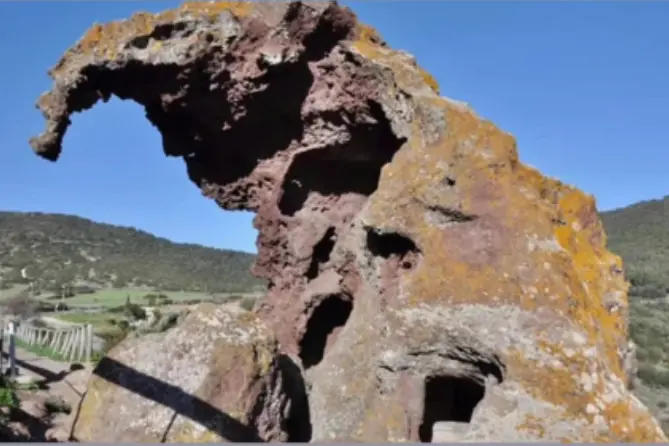Castelsardo, Elephant Rock in UNESCO: promotion begins
It is among the 17 recognized sites in ParisPer restare aggiornato entra nel nostro canale Whatsapp
Among the 17 sites recognized by UNESCO, the Domus de Janas of the Elephant Rock in Castelsardo stands out. Since 2017, the former mayor Franco Cuccureddu was involved by Professor Tanda in the candidacy and registration in the UNESCO Tentative List.
"The Elephant Rock is located precisely in the Multeddu area, at km 4.3 of the SS 134 road that connects Castelsardo to the municipality of Sedini. It is an enormous boulder of trachyte and andesite. In the distant past, the boulder was part of the Monte Castellazzu rock complex, from which it broke away one day and rolled down to the valley, landing precisely where it stands today. Over the years, it was shaped into an animal form. Inside, it contains two Domus de Janas, excavated on different levels, likely between 3200 and 2800 BC, which provide tangible evidence of the life of the Sardinians in the prehistoric Neolithic era," explains Mayor Maria Lucia Tirotto. The Elephant Rock, now a UNESCO World Heritage Site and one of the emblems of Castelsardo, represents a testimony of considerable archaeological importance.
In the upper hypogeum, three rooms are still well preserved. The second, lower hypogeum is very well preserved and features two opposing bull protomes carved in relief on the walls of one of the internal rooms. This hypogeum now comprises four small rooms, originally preceded by a short dromos (corridor), partly covered and partly open. Because of this archaeological peculiarity, the Elephant Rock was called Sa Pedra Pertunta, its original name in the Sardinian language, which literally translates to "the perforated stone." "As a municipal administration, we began by restoring nighttime lighting to the Rock, which remained in darkness for five years, thus allowing the site to be viewed even after sunset," Tirotto emphasized. Various conservation, enhancement, and accessibility projects are currently underway.
"This fall, Anas SpA will be rectifying a section of the existing road, moving the roadway away from the natural monument, and building a roundabout connecting state road 134 and provincial road 90, replacing the current at-grade intersection in front of the archaeological area. The project will be completed in 120 days, with funding totaling €360,000," adds Christian Speziga, Councilor for Archaeological Heritage.
Another project is being undertaken by the Northern Sardinia Metropolitan Network, with a €300,000 funding earmarked for enhancing the monumental rock , allowing it to be used in complete safety. This includes the reconstruction of the existing pedestrian path parallel to the main road, the construction of a nature trail parallel to a subscarpment wall located downstream from the main road, which surrounds the rock and allows for viewing the monument from behind, and the installation of furnishings and information totems.
"Our municipality, with a €150,000 grant, is planning to extend the walkway and redevelop the space in front of the monument, starting from the Multedu area. With the aim of networking with neighboring municipalities in the Anglona region, we are planning other initiatives to enhance the cultural and landscape heritage, spanning from prehistoric times to the contemporary era. It was announced a few days ago that the Region, at the proposal of Cultural Heritage Councilor Ilaria Portas, has allocated €15 million from the Development and Cohesion Fund to enhance the monuments that are part of the serial site "Art and Architecture of Prehistoric Sardinia. The Domus de Janas," a candidate for UNESCO recognition. These projects aim to ensure safety, improve accessibility and usability, restore, protect, revitalize the urban and landscape, and enhance the areas where the assets are located," emphasized Councilor Speziga.
